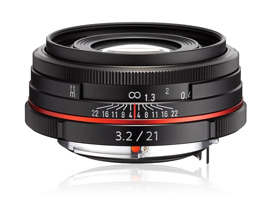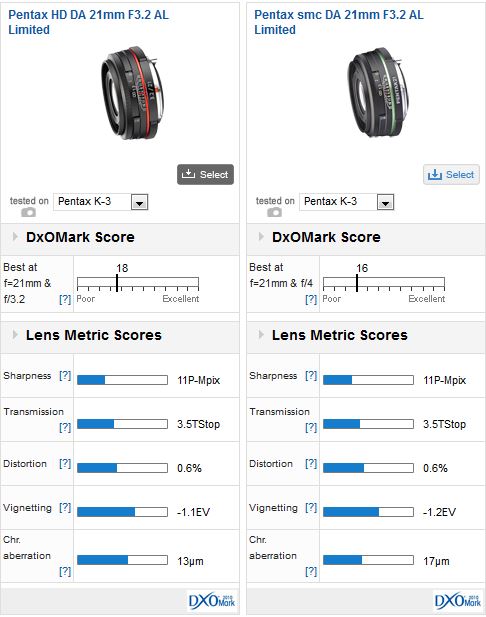Introduction
Pentax DSLR owners can take advantage of the widest range of dedicated lenses covering the smaller APS-C sensor, and the DA Limited series is one of the smallest and best made of the various lens series that the company offers.
As a moderate wide-angle model, the equivalent of a 32mm on full-frame camera, the HD DA 21mm f3.2 AL Limited is an update to the original ‘smc’ model. As well as new rounded diaphragm opening for improved rendering of out of focus areas, the new model has nano-tech ‘HD’ (High Definition) multi-layer lens coatings. As well as a new coating process, which is claimed to reduce unevenness that can affect image quality, the HD coatings are claimed to increase light transmittance and lower reflectance by more than 50% compared to conventional coatings, thus reducing flare and ghosting.
In other respects the HD version is much the same as the original. It retains the high-grade aluminum alloy outer and somehow manages to squeeze 8 elements in 5 groups into a body that measures just 1” (25mm) in length. In spite of the all-metal body it weighs just 0.30 lb (134g). With a 49mm filter thread and a minimum focus distance of 0.7” (0.2m) the new Pentax HD DA 21mm f3.2 AL Limited is available now at $699.
Pentax HD DA 21mm F3.2 AL Limited lens performance
Mounted on the new Pentax K-3 with its 24-Mpix sensor without the AA blur filter the new HD 21mm f3.2 AL Limited achieved a DxOMark lens score of 18 points. That’s a good but not great score for a moderately wide prime, and in part that’s due to the slightly lower than expected 11-P-Mpix peak sharpness score. Given the potential of the optical system sharpness is a little disappointing but it’s not the whole story.
Distortion is low and vignetting, if not low exactly for this type of lens, is at least well controlled.
Peripheral illumination is 1.1 Ev lower in the extreme corners than the center at maximum aperture but the transition isn’t abrupt, and besides it’s easy to remove if it’s troubling. A trace of vignetting can still be seen at f4 in the corners but it’s clear by f5.6.
Chromatic aberration is more troublesome, and it’s noticeable at times in the outer 50% of the frame. Stopping down helps reduce it but it remains in the extreme corners in our tests, though it is unlikely to be an issue in normal use.
Pentax HD DA 21mm F3.2 AL Limited versus Pentax smc DA 21mm F3.2 AL Limited mounted on Pentax K-3: Enhanced performance
Compared with its smc predecessor, the HD version performs very similarly as you might expect, but there are some improvements. From the initial aperture to f5.6, the new HD coated lens has slightly better uniformity, although from f8 through to f22 the two remain alike. Although peak sharpness and transmission remains unchanged, the new HD coating technology, which, according to the company shuns the conventional vacuum evaporation process, appears to improve peripheral illumination while also lowering lateral chromatic aberration.
With lens compactness being a real selling point these days the popularity of Pentax’s tiny ‘pancake’ primes continues unabated. The smc 21mm f3.2 AL Limited was a well-liked model and the new HD version, with its improved coatings, has brought subtle but welcome enhancements to image quality. If you already own the smc version there seems little real reason to upgrade, but if you were thinking of picking one up for the first time, the small premium of around $50 appears to be a small price to pay for the benefits.








DXOMARK encourages its readers to share comments on the articles. To read or post comments, Disqus cookies are required. Change your Cookies Preferences and read more about our Comment Policy.